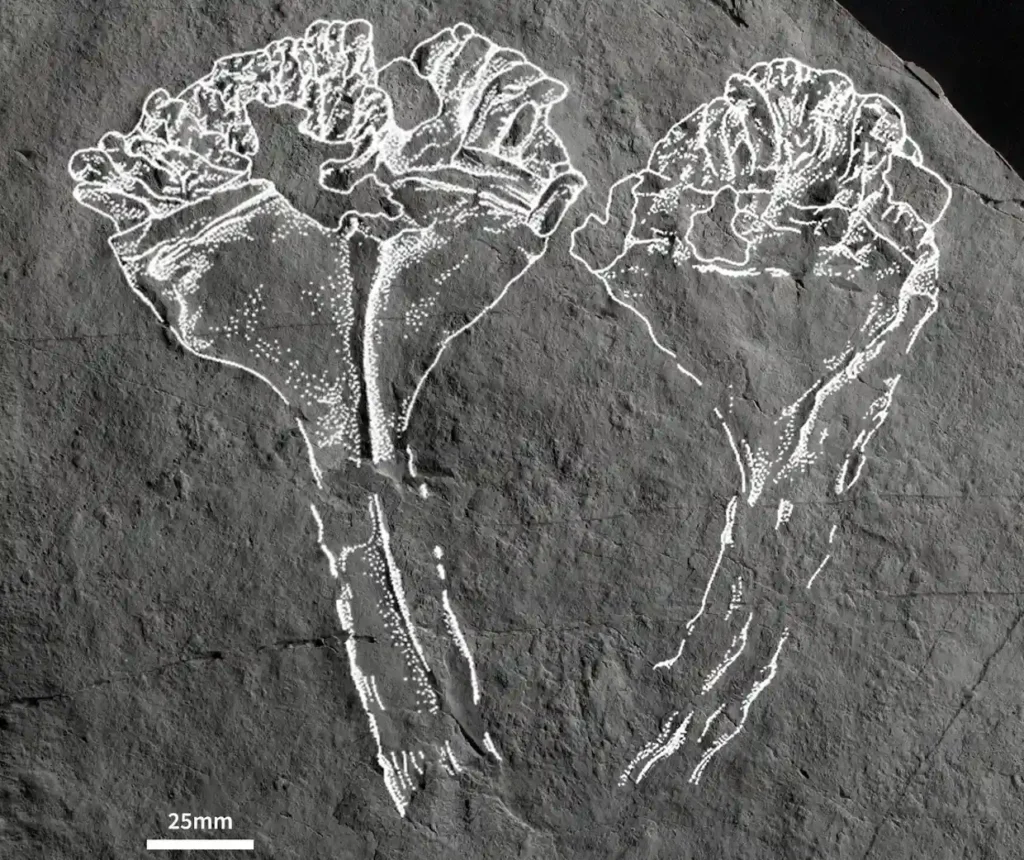
Auroralumina Attenboroughii, is a sea creature thought to have used tentacles to capture food.

Sir David Attenborough’s body may have decomposed in a hundred years, but a fossilized sea creature thought to be Earth’s first animal predator will bear his name.
The creature was discovered in Charnwood Forest, Leicestershire, where Attenborough used to hunt for fossils as a child, and it predates what was previously thought to be the oldest predator by 20 million years.
Auroralumina attenboroughii was named by paleontologists after the TV host. The first part of its name is Latin for dawn lantern, in recognition of its great age and resemblance to a burning torch, and the creature is thought to have captured food in Earth’s early oceans using a set of densely packed tentacles.
The fossils in Charnwood Forest are well-known. Despite digging there as a child, Attenborough avoided the rocks where Auroralumina was discovered. “They were thought to be so old that they predated the beginning of life on Earth.” “As a result, I never looked for fossils there,” he explained.
A few years later, in 1957, Roger Mason, a younger boy at Attenborough’s school, discovered a fern-like impression. The find turned out to be one of the oldest fossilized animals, and it was named Charnia masoni after Mason.
“Now I have almost caught up with him, and I am truly delighted,” said Attenborough, who has more than 40 species named after him, ranging from a Madagascan dragonfly to a dandelion-like hawkweed found only in south Wales’ Brecon Beacons.
Auroralumina is one of over 1,000 fossils discovered in 2007 by a team of British Geological Survey researchers who spent more than a week cleaning a 100-square-metre rock surface with toothbrushes and pressure jets before using a rubber mould to capture an impression of its lumps and bumps.
The fossil was dated at the British Geological Survey’s headquarters using zircons, which are tiny radioactive minerals in the surrounding rock that act as geological clocks.
The 560m-year-old specimen, which is related to modern corals, jellyfish, and anemones, is the first of its kind. Its discovery, which was reported in Nature Ecology and Evolution, calls into question when modern animal groups first appeared on Earth.
“It is widely assumed that modern animal groups such as jellyfish appeared 540 million years ago during the Cambrian explosion.” “However, this predator predates it by 20 million years,” said Dr Phil Wilby, palaeontology leader at the British Geological Survey, who assisted in its discovery.
“It’s the earliest known creature to have a skeleton.” We’ve only found one so far, but it’s thrilling to think there must be more out there, holding the key to when complex life first appeared on Earth.”
“It’s nothing like anything else we’ve found in the fossil record at the time,” said Dr Frankie Dunn of the Oxford University Museum of Natural History, who conducted the detailed study.
Unlike other fossils from this time period, “this one clearly has a skeleton, with densely packed tentacles that would have waved around in the water capturing passing food, much like corals and sea anemones do today,” she explained.
It may have formed in shallower water than the rest of the Charnwood fossils. “With the exception of A. attenboroughii, all of the fossils on the cleaned rock surface were anchored to the seafloor and were knocked over in the same direction by a deluge of volcanic ash sweeping down the submerged foot of the volcano,” Dunn said. “It’s at an odd angle and has lost its base, implying that it was swept down the slope by the deluge.”
On July 25, 2022, this article was updated to correct the spelling of Charnwood Forest.

Leave a Reply